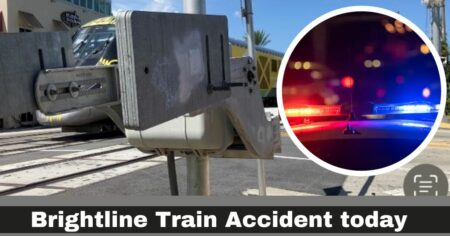According to the center, the storm’s center is 60 miles west of Charleston and is currently heading into South Carolina. Along with the surge, the eastern Carolinas will continue to see heavy rain, strong gusts, and a tornado threat through the night. For more details read the full post:
How Will It Affect the Carolinas?
The effects of Idalia becoming a Category 2 hurricane on Tuesday afternoon may already be felt locally. Tuesday night, it began to pick up speed and by 11 p.m., it was almost a Category 3 hurricane.
By the time it reaches Florida’s Big Bend region, the storm is predicted to intensify to a Cat 4 storm, according to the National Weather Service. Before the storm, the governors of South Carolina Henry McMaster, and North Carolina Roy Cooper each proclaimed a State of Emergency. See the Tweet below:
Latest track as #Idalia maintaining Hurricane strength as it approaches Charleston pic.twitter.com/LJYsXhLikr
— John Ahrens (@JohnAhrensWSOC9) August 30, 2023
In the upcoming two days, Florida faces an increasing chance of a deadly storm surge and hazardous hurricane-force winds. Over the next 48 hours, the Charlotte area is predicted to receive 1 to 3 inches of rain.
Please click on this link for further information if you’re interested:
- Hurricane Hilary Path: Warning as California Braces for Heavy Rain
- Hurricane Hilary Tracker Map: Live Updates, Rainfall Totals and More
- Hurricane Idalia: Deadly Tropical Storm Floods Parts of South Carolina, Including Charleston, After pummeling Florida
In certain locations along the Carolinas’ coast, closer to 6 inches of rain are anticipated. Steve Udelson, chief meteorologist, predicts that we will remain on the storm’s northern periphery during the night on Wednesday.
As you travel along Highway 9 into the South Carolina midlands, the effects will become more intense. In the southern and eastern parts of Charlotte, a Flood Watch is in force until Thursday. Before the storm moves on, Udelson predicts that we will receive two or more inches of rain.

Northwest of Interstate 85, there will be a severe cutoff where minimal rain will fall. Baggett stated that by Thursday morning, when the outer bands of the storm have passed the Charlotte area, it should have entirely left our region.
Gov. Cooper issued the proclamation on Monday in order to activate the state’s emergency operations plan, aid in the transportation of fuel and other vital supplies and services, aid first responders, protect the public from price gouging, and assist the agricultural sector in storm preparation.
According to Cooper’s remark:
“We are continuing to monitor Idalia’s course and its potential impacts on our state and it’s critical to make sure we are fully prepared, It is important for North Carolinians to gather emergency kits and prepare for the storm before it’s too late. We also want to make sure our farmers are able to protect their crops.”
Monday afternoon found Gov. McMaster doing the same. In a statement, McMaster stated:
“Although South Carolina may avoid the worst of Hurricane Idalia’s impacts, this State of Emergency is issued out of an abundance of caution to ensure that we have the necessary resources in place to respond to flooding events and are able to respond quickly if the forecast worsens, Now is the time for South Carolinians to begin making proper preparations, and everyone should begin actively monitoring official sources for the most up-to-date information – especially those along our coast and in low-lying areas.”
The American Red Cross branch in Charlotte is already en route to Florida to assist with relief efforts. We hope you found some useful information in our article. Share your views in the comments and stay tuned to NewsConduct.com for the latest buzz and current news on your locality.



